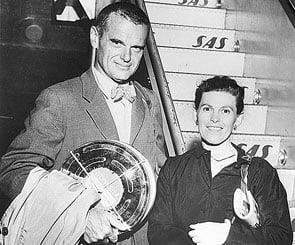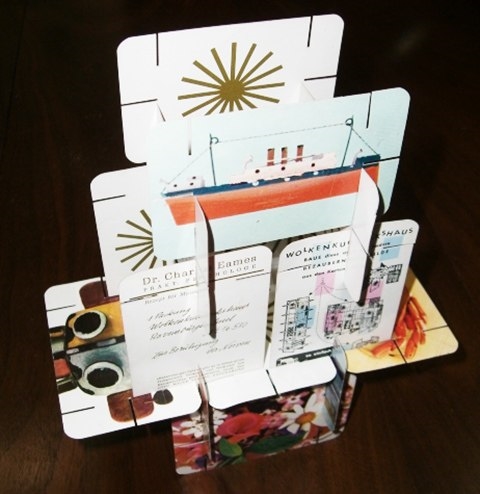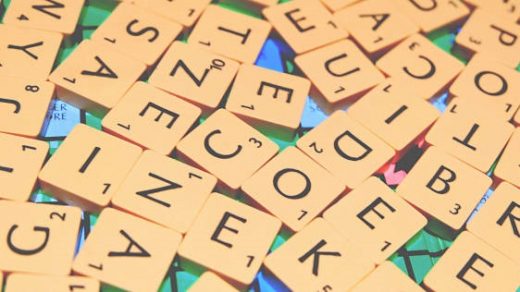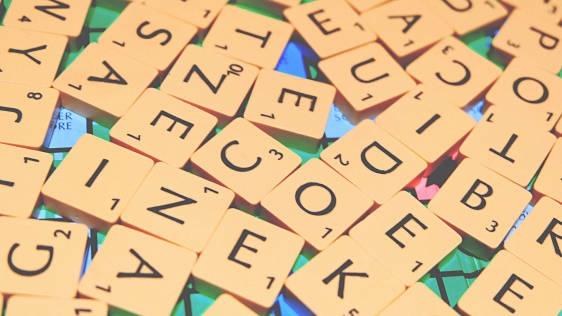Do This 20-Minute Morning Routine Before Answering A Single Email
In 1957, the designers Charles and Ray Eames created a “Solar Do-Nothing Machine” for the Aluminum Company of America. It’s a solar-powered gizmo whose artful welter of spinning doohickeys and pulley-powered whatsits amounts to a kind of phantasmagoric Rube Goldberg Machine–a lark that, technically, produces nothing. That is, if you believe that joy, inspiration, and an early exploration of solar-generated electricity are also nothing.
I think about the Solar Do-Nothing Machine on Monday mornings here at Herman Miller, where the Eameses designed some of the most iconic furniture of the 20th century. That’s because, before my two teammates and I succumb to a crushing cache of emails and Slack alerts, we get our coffees and park ourselves (in a trio of Eames Shell chairs) for a 20-minute round of cutthroat anagrams.

As far as work output goes, we aren’t technically producing anything more than the Do-Nothing Machine did. Yet our morning ritual similarly has a function that’s harder to see: It’s a mental warm-up that jumpstarts team creativity at a time of the day when it’s most likely to be gobbled up by distractions.
Not every team benefits from a 20-minute round of early-morning anagrams, but most will benefit from what I like to think of as “craft-adjacent play” before getting down to work.
What’s The Point Of Craft-Adjacent Play?
For the uninitiated, cutthroat anagrams is a multiplayer game of speed anagrams you play with a set of Scrabble tiles. You gradually flip over your pile of tiles, forming and rearranging words as quick as you can, all while defending the ones you’ve made and stealing those of your opponents. It’s a deep-dive into word nerdery–the kind of game that, after a round, or maybe two, sends essentially everyone else I’ve played with looking for a sink of dishes to wash or a spreadsheet to pore over. Astoundingly, my colleagues Amanda and Lindsey like it (. . . okay, Amanda might be lying, but it really feels like Lindsey is down).
And that part is key. For the three of us, at least, words are our tools. To use them well, we need to deeply experience our tools and how they work–before we dig into our inboxes or tackle anything else. I also believe that the rearrangement of words is not that far from the rearrangement of ideas, and that, as Charles and Ray once said, “Toys and games are the prelude to serious ideas.
In addition to being an incredible mental warm-up, setting aside 20 minutes in the morning for craft-adjacent play is a great chance to build a little team amity. And despite how it may look, it’s actually a sign that we take our craft seriously. After all, we aren’t just goofing off. Sure, plenty of studies have proven the benefits of playtime at work–including the utterly purposeless kind. And one study published in Psychological Science in June 2017 found that many of the cognitive and creative benefits arise when you play first and work later, rather than take a “recess” halfway through the afternoon.
But our morning anagrams ritual is a little more targeted than that: We’re playing purposefully, using the skills and mental resources we’re planning to draw on over the course of the workday.
Drawing Creative Insights From Slack Silliness
I took a little poll of some of my most creative colleagues at Herman Miller to see if my team and I were alone in this habit of ours. Turns out we aren’t. Hadley Lord, a salesperson, told me she occasionally conjures an improv acting game–“What’s my motivation!” she exclaimed–when gearing up for a sales meeting.
Joseph White, our director of workplace strategy, design, and management, leans on his experience as a weaver. “My job is to deconstruct the experience of work into component parts,” he told me, “to learn as much about them as possible, then put them back together again in hopes of achieving better results. It’s essentially weaving with ideas.”
I think my favorite example of craft-adjacent play came from Emily Nagy, a visual designer on the digital team. She holds the distinction of having created the funniest Slack channel at the company. Nagy, who spends a lot of time in our digital asset management (DAM) system, started #dam-caption-contest after she kept digging truly strange photos out of the digital archive. Today, she posts them in a kind of highbrow furniture–themed New Yorker cartoon caption contest.
One photo shows two men in clown suits and full makeup eating chicken wings, possibly at some company picnic of yesteryear. Another shows a dramatically lit sofa puzzlingly placed between two cars in a dark parking garage. In a third, we see a woman in a power suit embracing, or maybe inspecting, or maybe cleaning, a large computer monitor. Needless to say, every time a new picture shows up on the channel, her team members erupt in a torrent of silliness and snark. If Herman Miller has must-read Slack, this is it.
“On the exterior, it’s just a funny channel for people to share weird images from our past, a lighthearted sort of self-deprecation,” Nagy said. “But from a technical standpoint, it helped me get a deeper understanding of how the DAM works, because I had to create a collection to house all of the outdated images I would come across.”

The caption contest has spread beyond the design team and now pretty much the entire brand group is guilty of some shameless pun or irony-drenched barb. I’ll confess to having added the odd silly caption, but to me, the real goal of playing around with DAM photos goes way beyond trading witticisms. The Slack channel is actually a kind of record of our photo styles–where we’ve been aesthetically–and a way to surface the sheer volume and variety of images in the vault. It takes a lot of pictures to run Herman Miller, and a light-hearted weekly assessment of our past work keeps our designers and art directors thinking creatively about ways to keep evolving.
Yes, the Eameses designed beautiful, functional furniture–long-lasting and well-beloved examples of problem-solving design. But they also set aside time for less “useful” projects, like their toy “House of Cards,” which simply encourages play. I don’t believe they would’ve been able to design such things without being playful themselves. What a joy it must have been to make them–what a joy, and what hard and serious work.
Aaron Britt is senior manager, brand content editor, where he heads up the editorial team at Herman Miller.
(52)



